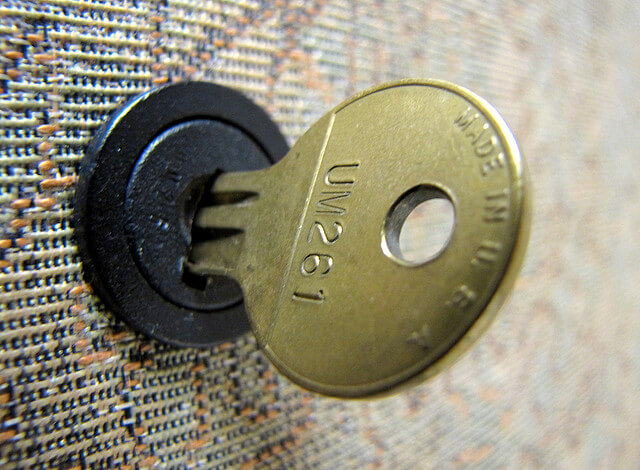How to Protect Your Assets with a Self-Directed IRA LLC – Part 1
A self-directed IRA, with its expanded options for investment choices, can be a great tool for creating wealth. Protecting that wealth is just as important as building it. Fortunately, there are steps you can take to mitigate risk in your IRA.

There are 3 types of events that can expose IRA assets to risk:
- Bankruptcy of the account holder
- Judgments afforded to non-bankruptcy creditors such a lender or claimant in a lawsuit
- Judgments stemming from the investment activities of the IRA
The first two apply to all IRA plans equally. A self-directed IRA is still ultimately an IRA and treated the same under state and federal law.
Because a self-directed IRA can invest in alternative assets like rental property there is a potential for liability risk not present in conventional assets like stocks or funds. Planning around this risk exposure can be important for self-directed IRA investors.
Bankruptcy
The passage of the Bankruptcy Abuse Prevention and Consumer Protection Act of 2005 (BAPCPA) granted federal protection to IRA plans. This protection excludes all or part of the IRA value from the bankruptcy estate. Prior to 2005, state law determined if and how an IRA was protected in a bankruptcy proceeding.
Under BAPCPA, IRA accounts have the following protections:
| IRA Type | Exclusion Limit |
| Traditional or Roth IRA funded by individual contributions | $1,512,350 aggregate protection of all such accounts per person (as of 2022), adjusted for inflation every 3 years |
| Traditional or Roth IRA funded via rollover from a SEP IRA, SIMPLE IRA, or Qualified employer plan | Unlimited exemption |
| SEP IRA | Unlimited exemption |
| SIMPLE IRA | Unlimited exemption |
| Inherited / Beneficiary IRA | No exclusion |
If an IRA contains more than $1.5M and was sourced IRA contributions and a rollover from a qualified employer plan, it could become difficult to segregate the total value attributed to each type and apply the correct exclusion amounts. It can therefore be wise to rollover a large 401k or other employer plan into an IRA that is separate from contributory IRA funds.
An inherited IRA is one in which the account remains in the original account holder’s name, but for the benefit of the heir. All IRA’s inherited by a non-spouse are not excluded from the bankruptcy estate per BAPCPA.
In the case of a spousal inheritance, the living spouse can choose to treat the IRA as an inherited IRA or transfer the account into their own name.
Leaving the account in the deceased person’s name allows the inheriting spouse to take distributions prior to age 59 ½ without penalty, but would expose the account to creditor claims in bankruptcy. Choosing to transfer the IRA into their own name would eliminate the ability to take pre age 59 ½ distributions without penalty, but would protect the IRA from bankruptcy.
Lawsuits and Other Non-Bankruptcy Judgments
The protections of BAPCPA only apply in bankruptcy proceedings. In the event of other judgments against an individual, the level of protection provided to IRA plans is determined by state law. Most states afford some protection to IRA plans, but the limits may be lower than the federal threshold of $1.5M that applies in bankruptcy.
In several states such as California, it is left to the discretion of the court to protect a “reasonable” amount of IRA savings as necessary to support the individual in retirement, with consideration of other assets the individual may hold. Wyoming affords no protection for IRA plans.
Lawsuits Against the IRA
This is the topic most critical to understand when using a self-directed IRA. The potential to diversify your investments beyond the stock market can create exposure to legal liability. A common example is when an IRA owns rental property.
If a tenant or other claimant decides to sue your IRA, not only would a rental property or other asset associated with a lawsuit be at risk, but the entire holdings of the IRA could be subject to forfeiture to satisfy a judgement.
If the assets of the IRA are not sufficient to satisfy a claim, it is even possible that the personal assets of the IRA account holder could be at risk. This is because an IRA is a trust held by the account holder that could be revoked at any time (through the act of taking a distribution). Because of this revocable nature, the courts have determined that while an IRA is shielded to some degree from claims against the IRA account holder, the IRA account holder is not always shielded from claims against the IRA.
The first line of defense, especially for an IRA investor holding real property, is to have adequate liability insurance. A good policy will provide significant protections.
The Checkbook IRA LLC format deployed by Safeguard Advisors provides an important layer of additional protection for investors seeking to participate in opportunities that may come with associated liability risk.
The LLC entity affords limited liability protection to the owner(s) of the LLC. If a lawsuit is filed for a property held in an IRA LLC, the LLC would be the defendant. The IRA as well as the IRA account holder would be shielded from claims or liability associated with the LLC.
If you are considering using a self-directed IRA to invest in asset classes such as real estate that may have liability exposure, the IRA LLC model deserves serious consideration because of the additional protections this structure provides.
In a future article, we’ll discuss how you can configure an IRA LLC not only to shield the IRA and yourself, but also to create segregation of risk across various investments within your IRA portfolio.
Photo by jasleen_kaur via CC license
Talk to An Expert Today!
Learn these little known strategies and tactics, and unlock your retirement plan today.
